Mushroom foraging has become increasingly popular, but it comes with serious risks. Every year, thousands of people worldwide suffer from mushroom poisoning, with some cases proving fatal. Understanding what happens when you consume toxic mushrooms could literally save your life or the life of someone you know.
- Why mushroom poisoning is so dangerous
- The body’s toxic battleground: how mushroom poisons work
- The most dangerous mushrooms that you should avoid
- Mushrooms with neural toxins
- Mushrooms that cause kidney damage
- How mushroom poison affects body
- The timeline: what to expect
- Critical mushrooms to absolutely avoid
- Why you can’t rely on folk wisdom
- The medical emergency: what happens at the hospital
- The sobering statistics
- Prevention is your best defense
- The bottom line: is it worth the risk?
Why mushroom poisoning is so dangerous
When you eat a poisonous mushroom, you’re essentially consuming a cocktail of natural toxins that have evolved over millions of years. Unlike many other types of food poisoning, mushroom toxins often cause delayed symptoms, meaning you might feel fine for hours or even days before the devastating effects begin to manifest.
This delay is particularly dangerous because it gives people a false sense of security. By the time symptoms appear, the toxins have already begun their destructive work on your organs, and medical intervention becomes much more challenging.
The body’s toxic battleground: how mushroom poisons work
Mushroom toxins don’t just cause simple stomach upset. They target specific organs and biological processes with surgical precision. Here’s what happens inside your body:
- Cellular Destruction: Many mushroom toxins work by disrupting protein synthesis within cells. This means your cells literally can’t repair themselves or carry out basic functions. It’s like throwing a wrench into the machinery that keeps you alive.
- Organ Failure: The toxins often have a particular affinity for certain organs. Your liver, which works overtime to filter toxins from your blood, often bears the brunt of the assault. Your kidneys, responsible for waste removal, can also shut down under the toxic load.
- Neurological Chaos: Some mushroom toxins specifically target your nervous system, causing hallucinations, seizures, or even coma. They interfere with the chemical signals that allow your brain to communicate with the rest of your body.
The most dangerous mushrooms that you should avoid
Death cap (Amanita phalloides)
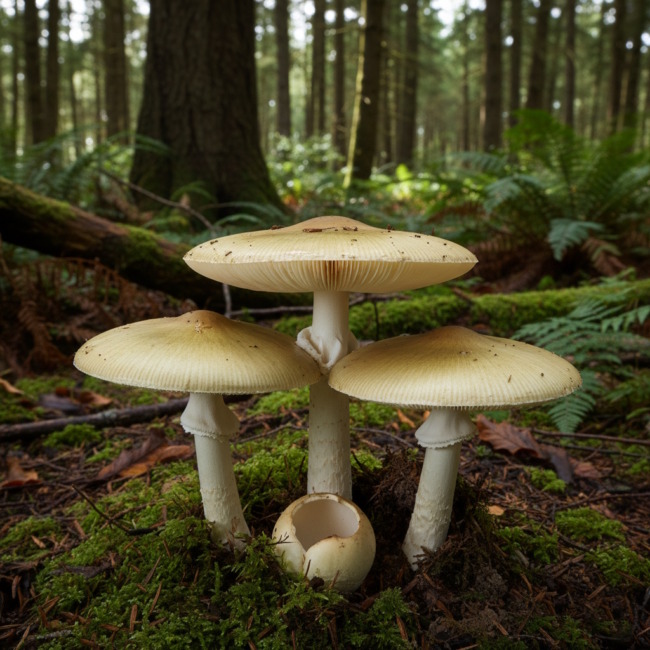
The death cap mushroom is responsible for about 90% of mushroom-related fatalities worldwide. Just one mushroom contains enough toxins to kill an adult human.
- What happens to your body: The death cap contains amatoxins, which cause what doctors call a “honeymoon period.” You’ll feel fine for 6-12 hours, then experience severe vomiting and diarrhea. After seeming to recover, the real damage begins as your liver starts to fail. Without treatment, death typically occurs within a week.
- Organ damage: Your liver cells begin dying en masse. Your kidneys may also fail as they struggle to filter the overwhelming amount of toxins. In severe cases, multiple organ systems collapse simultaneously.
Destroying angel (Amanita bisporigera)
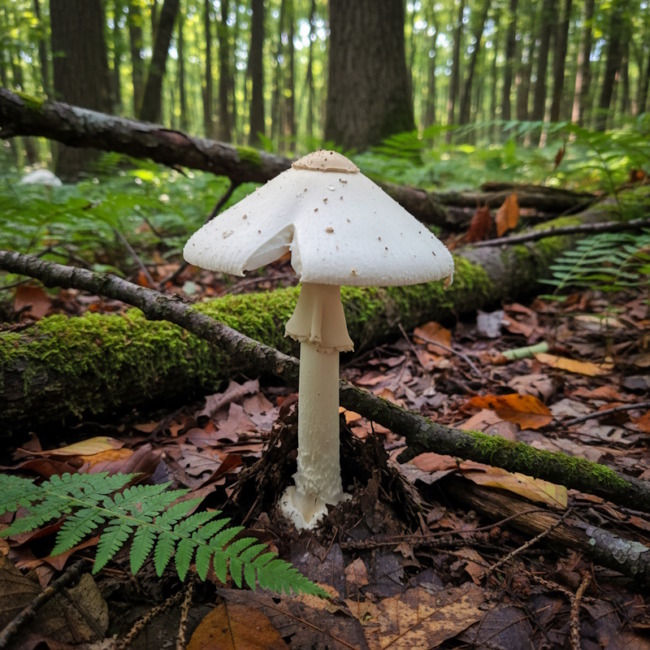
Similar to the death cap, destroying angels contain the same deadly amatoxins but are found primarily in North America.
- What happens to your body: The progression mirrors death cap poisoning – initial gastrointestinal distress followed by apparent recovery, then catastrophic organ failure. The “destroying” in its name isn’t hyperbole.
- Organ damage: Complete liver destruction is common, often requiring an emergency liver transplant for survival. Even with medical intervention, the mortality rate remains high.
False morel (Gyromitra esculenta)
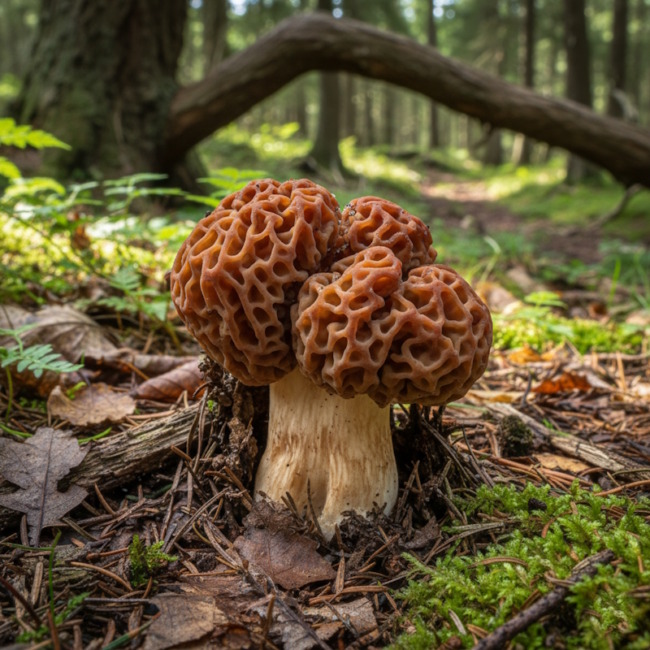
This spring mushroom contains gyromitrin, which breaks down into rocket fuel component monomethylhydrazine in your body.
- What happens to your body: Symptoms typically appear within 2-24 hours and include severe headaches, vomiting, and diarrhea. In severe cases, you may experience seizures and liver damage.
- Organ damage: Your liver and central nervous system bear the primary impact. Brain swelling can occur in severe poisoning cases.
Mushrooms with neural toxins
Fly agaric (Amanita muscaria)

The iconic red mushroom with white spots contains ibotenic acid and muscimol.
- What happens to your body: Within 30 minutes to 3 hours, you’ll experience altered perception, confusion, and potentially terrifying hallucinations. Physical symptoms include excessive salivation, tears, and muscle twitching.
- Organ damage: While rarely fatal, these mushrooms can cause significant neurological disturbances and, in large doses, respiratory depression that could be life-threatening.
Deadly galerina (Galerina marginata)
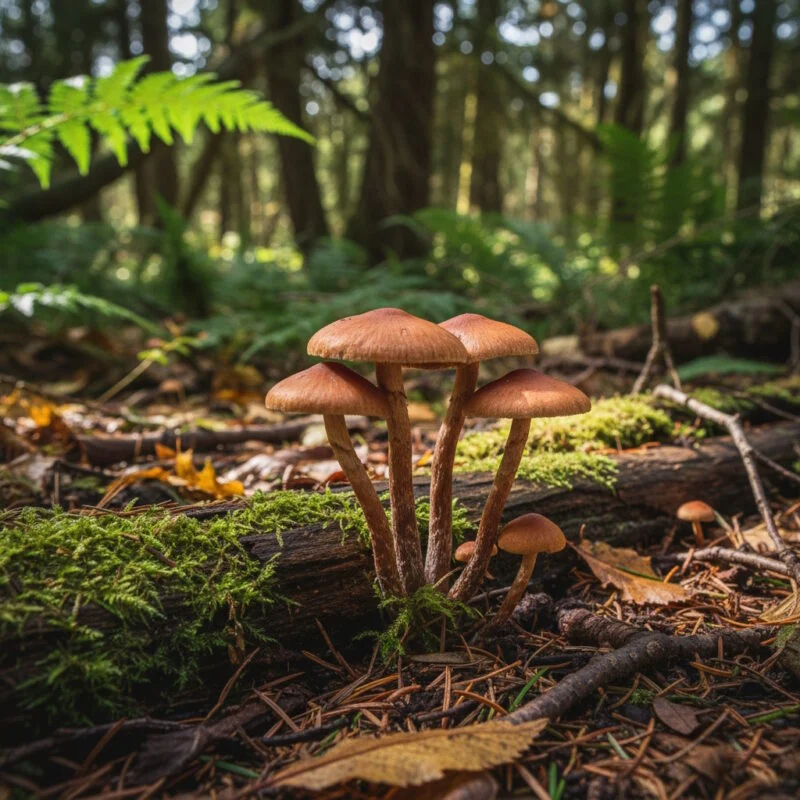
These small, innocuous-looking mushrooms contain the same amatoxins as death caps but are often mistaken for edible varieties.
- What happens to your body: The poisoning progression is identical to death cap poisoning – delayed onset followed by severe organ failure.
- Organ damage: Complete liver failure is the primary concern, with kidney damage also common.
Mushrooms that cause kidney damage
The Cortinarius species
The Cortinarius genus includes some of the most insidious killers in the mushroom world. The most dangerous species are the Deadly Webcap (Cortinarius rubellus) and Fool’s Webcap (Cortinarius orellanus).
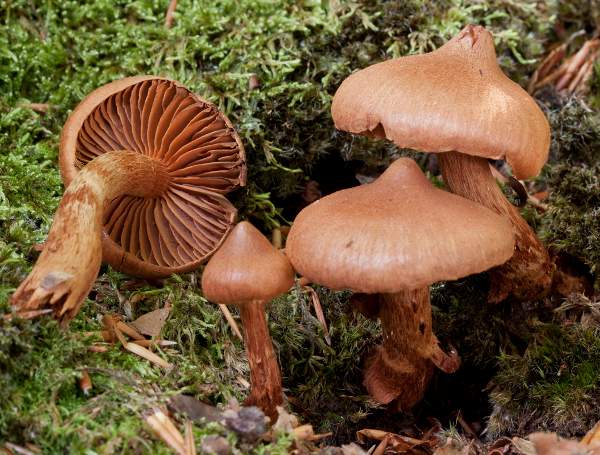
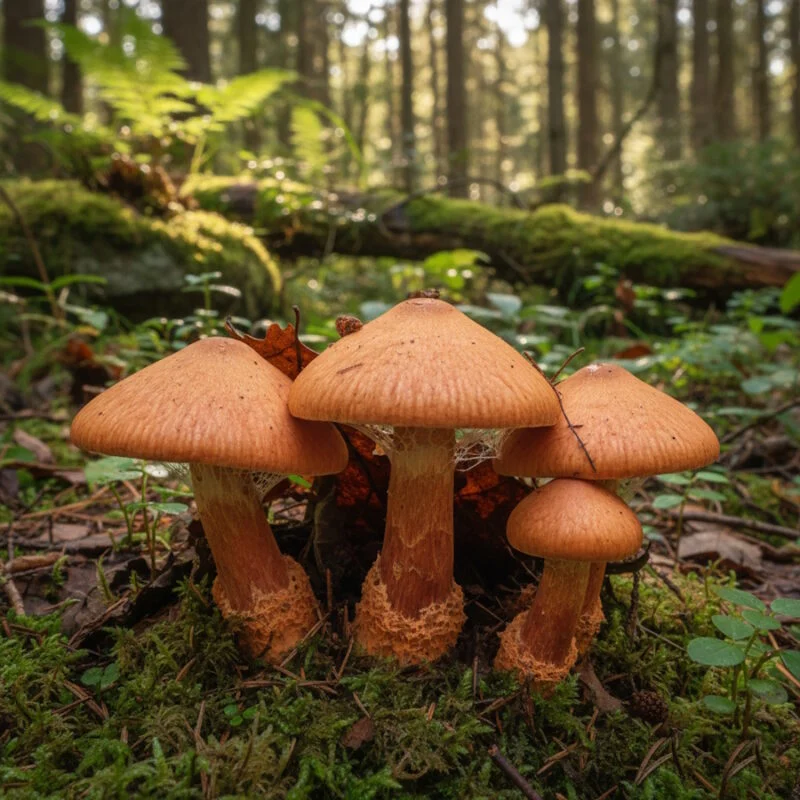
- What happens to your body: This is perhaps the most deceptive poisoning of all. You might feel completely fine for days, weeks, or even months after eating these mushrooms. The orellanine toxin works silently, systematically destroying your kidneys cell by cell. By the time symptoms appear – excessive thirst, reduced urination, swelling, and fatigue – irreversible kidney damage has already occurred.
- Organ damage: Orellanine specifically targets kidney tissue, causing what doctors call “acute tubulointerstitial nephritis.” Unlike other mushroom toxins that work quickly, orellanine can take 3 days to 3 weeks to show symptoms. Your kidneys gradually lose their ability to filter waste from your blood. Without dialysis or kidney transplantation, death from uremic poisoning becomes inevitable.
- Why it’s particularly dangerous: The delayed onset means people often don’t connect their kidney problems to mushroom consumption that happened weeks earlier. Many cases are initially misdiagnosed as other kidney diseases, delaying proper treatment. Even worse, people might consume these mushrooms multiple times before realizing they’re being poisoned, compounding the damage.
How mushroom poison affects body
Liver: the primary target
Your liver processes about 1.4 liters of blood every minute, making it the first line of defense against toxins. When overwhelmed by mushroom poisons:
- Liver cells begin dying within hours of exposure
- Bile production stops, causing jaundice (yellowing of skin and eyes)
- Blood clotting becomes impaired, leading to internal bleeding
- Waste products accumulate in your blood, causing confusion and coma
Kidneys: secondary casualties
As your liver fails, your kidneys work overtime to compensate:
- Toxin buildup causes kidney cell death
- Urine production may stop completely
- Fluid accumulates in your body, causing dangerous swelling
- Electrolyte imbalances can cause heart rhythm abnormalities
Nervous system: when toxins cross the blood-brain barrier
Some mushroom toxins can cross the protective barrier between your blood and brain:
- Neurotransmitter disruption causes hallucinations and seizures
- Brain swelling can increase pressure inside your skull
- Coordination and muscle control may be severely impaired
- In extreme cases, coma and respiratory failure can occur
Webcap mushrooms and affect on kidneys
While most mushroom toxins attack the liver first, orellanine from Cortinarius species (webcap/spindling mushrooms) has a specific affinity for kidney tissue, creating a uniquely devastating form of organ failure:
- The Cellular Attack: Orellanine doesn’t just damage kidneys – it systematically destroys the tubular cells that are essential for filtering waste from your blood. These specialized cells, once destroyed, cannot regenerate. The toxin works like a slow-acting poison, methodically killing kidney tissue over weeks or months.
- The Silent Progression: Unlike liver failure, which often announces itself with jaundice and obvious symptoms, kidney destruction from orellanine happens quietly. Your kidneys have tremendous reserve capacity, so you won’t notice problems until about 75% of kidney function is already lost. By then, the damage is typically irreversible.
- The Body’s Toxic Overload: As your kidneys fail, waste products that should be filtered out begin accumulating in your blood. Creatinine and urea levels skyrocket, creating a condition called uremia. This toxic buildup affects every organ system – your heart rhythm becomes irregular, your brain function deteriorates, and dangerous fluid accumulates in your lungs and tissues.
- The Cruel Timeline: The insidious nature of orellanine poisoning means that when symptoms finally appear – excessive thirst, decreased urination, swelling in legs and face, and crushing fatigue – your kidneys may already be operating at less than 25% capacity. At this stage, only dialysis or kidney transplantation can save your life.
The timeline: what to expect
- Hours 1-6: Most people feel completely normal. This false security is what makes mushroom poisoning so insidious.
- Hours 6-24: Severe vomiting, explosive diarrhea, and cramping begin. You may become severely dehydrated.
- Hours 24-72: Symptoms may improve dramatically, leading people to believe they’re recovering. This is often when people decide they don’t need medical help – a potentially fatal mistake.
- Days 3-7: Organ failure begins in earnest. Jaundice appears, confusion sets in, and without intensive medical care, death becomes likely.
Critical mushrooms to absolutely avoid
Beyond the major killers already discussed, several other species pose serious risks:
- Jack O’Lantern Mushrooms: Cause severe gastrointestinal distress but are rarely fatal. The violent vomiting and diarrhea can still lead to dangerous dehydration.
- Green-Spored Lepiota: Contains amatoxins similar to death caps. Even small amounts can cause liver failure.
- Cortinarius Species: The ultimate delayed-action killers. Orellanine toxin can destroy your kidneys weeks after consumption, often without any early warning signs.
- Autumn Skullcap: Another amatoxin-containing species that’s particularly dangerous because it can be confused with edible mushrooms.
Why you can’t rely on folk wisdom
Many dangerous myths persist about identifying poisonous mushrooms:
- Myth: “If animals eat it, it’s safe.” Reality: Many animals can safely consume mushrooms that are deadly to humans.
- Myth: “Cooking destroys the toxins.” Reality: Most mushroom toxins are heat-stable and remain deadly even after thorough cooking.
- Myth: “A silver spoon will turn black if the mushroom is poisonous.” Reality: This test is completely unreliable and has no scientific basis.
The medical emergency: what happens at the hospital
If you’ve consumed a potentially poisonous mushroom, here’s what medical professionals will do:
- Immediate assessment: Blood tests to check liver and kidney function, along with electrolyte levels.
- Decontamination: If caught early, activated charcoal may be used to prevent further toxin absorption.
- Organ support: IV fluids, medications to support blood pressure, and close monitoring of organ function.
- Specific treatments: For amatoxin poisoning, treatments like silibinin (milk thistle extract) and N-acetylcysteine may be administered.
- Transplant consideration: In severe liver failure cases, emergency liver transplantation may be the only option for survival.
The sobering statistics
The numbers tell a grim story:
- Mushroom poisoning has a mortality rate of 10-15% even with medical treatment
- Children are particularly vulnerable due to their smaller body size
- Most fatal poisonings occur during peak mushroom season (fall and spring)
- Even experienced foragers occasionally make fatal mistakes
Prevention is your best defense
The only completely safe approach is simple: never eat wild mushrooms unless identified by a certified expert. Even then, consider these additional precautions:
- Photography: Take detailed photos of any mushroom before consuming it, including the cap, stem, gills, and growing location.
- Spore prints: Learn to make spore prints, as spore color is crucial for proper identification.
- Multiple sources: Never rely on a single field guide or app for identification.
- Start small: Even with “safe” mushrooms, consume only small amounts initially to test for individual sensitivity.
The bottom line: is it worth the risk?
The question isn’t whether you might get lucky and avoid poisoning – it’s whether you’re willing to gamble your life and the lives of those you feed. With commercially grown mushrooms readily available and completely safe, the risk-benefit analysis clearly favors caution.
Mushroom poisoning doesn’t just mean a bad day with stomach upset. It means potential organ failure, emergency medical intervention, possible transplantation, and very real risk of death. The toxins in poisonous mushrooms are among nature’s most efficient killers, refined over millions of years of evolution.
Your liver, kidneys, and nervous system didn’t evolve to handle these concentrated natural toxins. When you eat a poisonous mushroom, you’re essentially playing Russian roulette with biochemical weapons.
The most experienced mycologists in the world occasionally make identification mistakes. If professionals with decades of training can be wrong, what does that mean for amateur foragers? The stakes are simply too high for guesswork.
Remember: there are old mushroom hunters, and there are bold mushroom hunters, but there are very few old, bold mushroom hunters. Your life is worth more than the thrill of foraging wild mushrooms.
Sources
- Tuğcan, M.O. and Akpınar, A.A. (2025) ‘Mushroom poisoning: An updated review’, Turkish Journal of Emergency Medicine, 25, pp.10-16.
- Unluoglu, I. et al. (2010) ‘Mushroom poisoning: retrospective analysis of 294 cases’, Clinics, 65(4), pp. 405-414.
- Tran, H.H. (2023) ‘Mushroom Toxicity’, StatPearls, [online] Available at: https://www.ncbi.nlm.nih.gov/books/NBK537111/ [Accessed 25 Sep 2025].
- He, Z. et al. (2024) ‘Wild mushroom poisoning: A case study of amatoxin’, Toxicon, 176, pp. 1-9.
- Vaibhav, V. et al. (2023) ‘Mushroom Poisoning: A Case Series With a Literature Review’, Cureus, 15(5).
- Wijesekara, T. et al. (2025) ‘Insights into therapeutic potential and practical applications of toxic mushroom compounds’, Biological Research, 58, pp. 1-15.
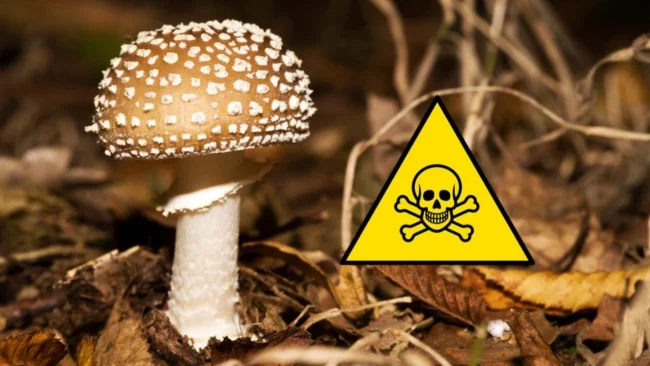
Leave a Reply